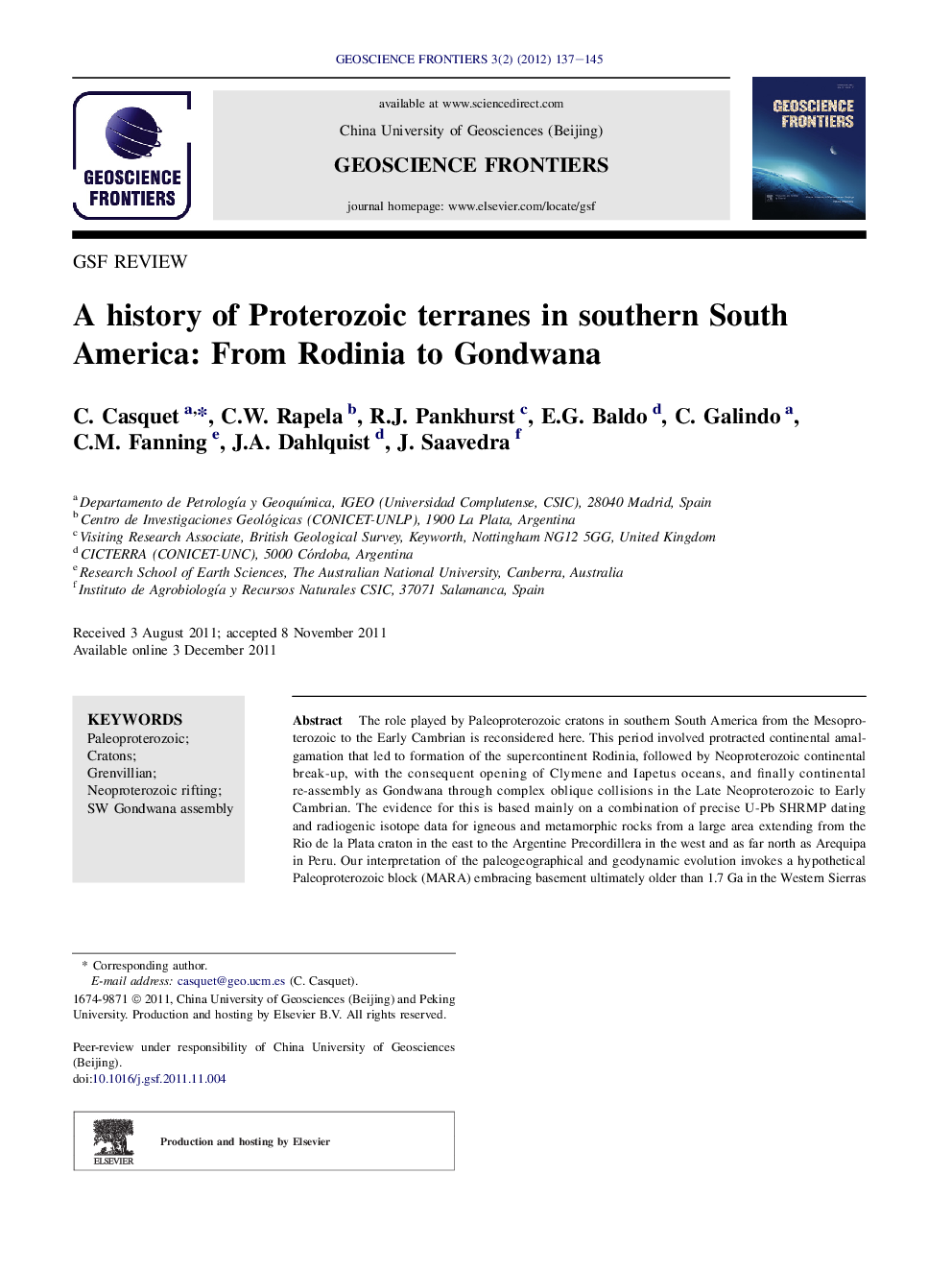| Article ID | Journal | Published Year | Pages | File Type |
|---|---|---|---|---|
| 4681730 | Geoscience Frontiers | 2012 | 9 Pages |
The role played by Paleoproterozoic cratons in southern South America from the Mesoproterozoic to the Early Cambrian is reconsidered here. This period involved protracted continental amalgamation that led to formation of the supercontinent Rodinia, followed by Neoproterozoic continental break-up, with the consequent opening of Clymene and Iapetus oceans, and finally continental re-assembly as Gondwana through complex oblique collisions in the Late Neoproterozoic to Early Cambrian. The evidence for this is based mainly on a combination of precise U-Pb SHRMP dating and radiogenic isotope data for igneous and metamorphic rocks from a large area extending from the Rio de la Plata craton in the east to the Argentine Precordillera in the west and as far north as Arequipa in Peru. Our interpretation of the paleogeographical and geodynamic evolution invokes a hypothetical Paleoproterozoic block (MARA) embracing basement ultimately older than 1.7 Ga in the Western Sierras Pampeanas (Argentina), the Arequipa block (Peru), the Rio Apa block (Brazil), and probably also the Paraguaia block (Bolivia).
